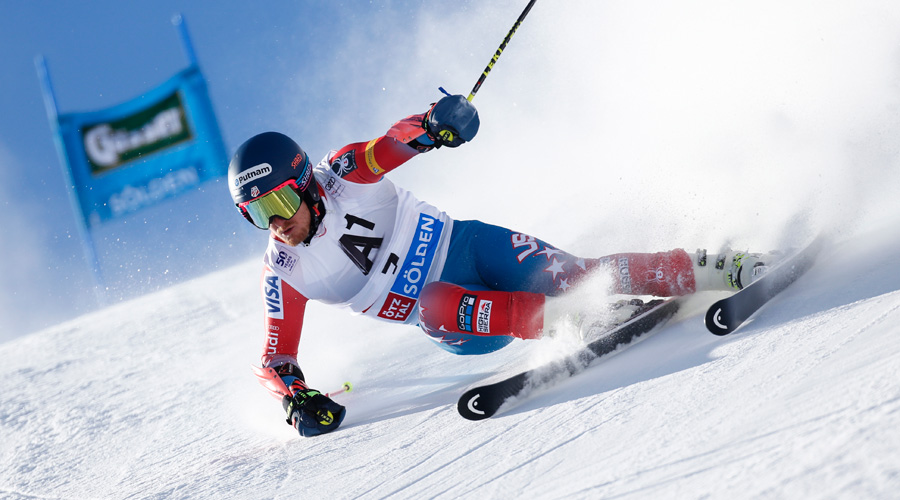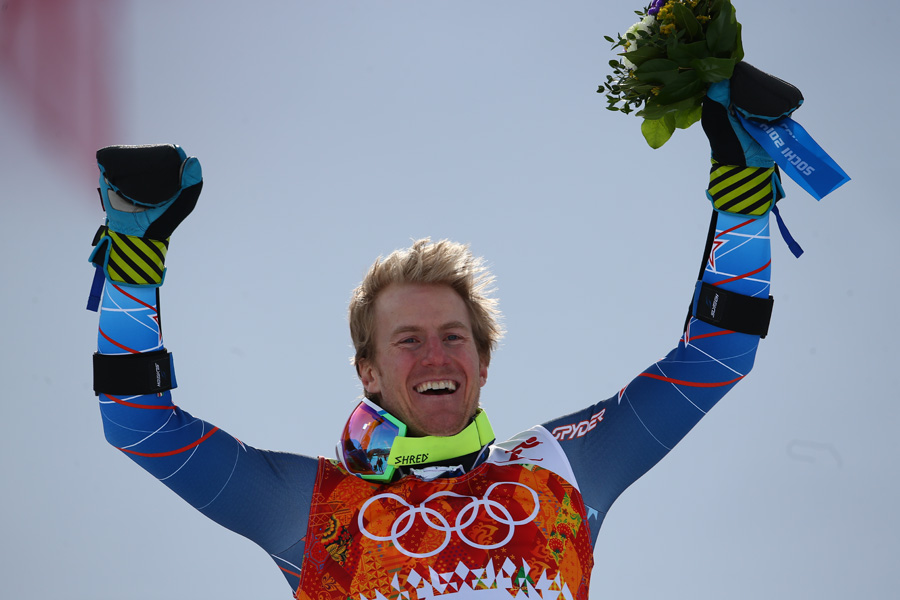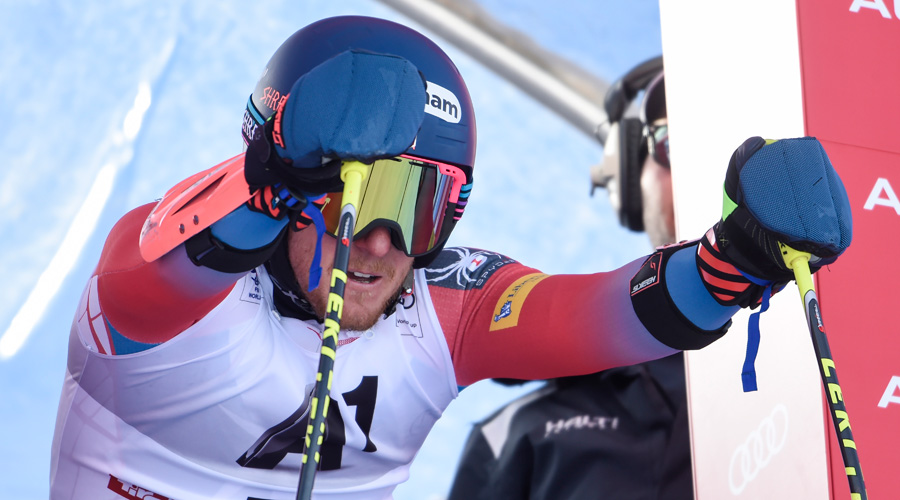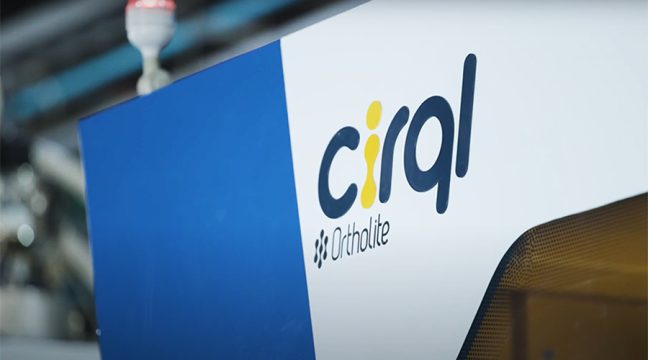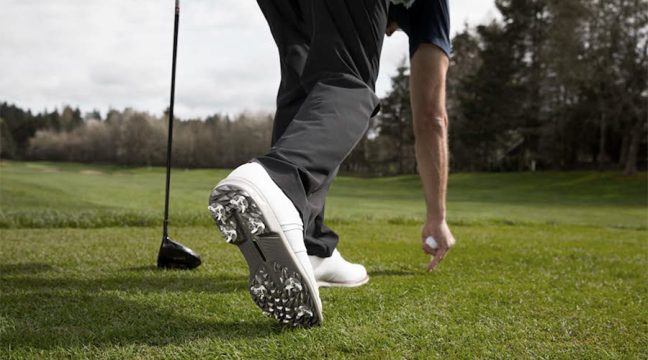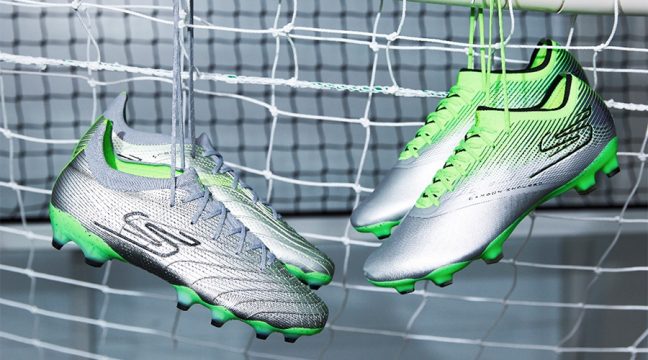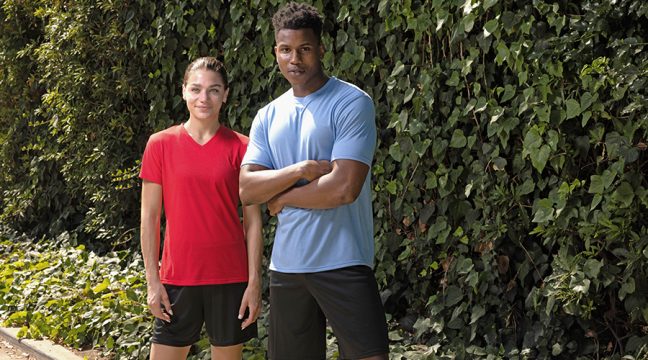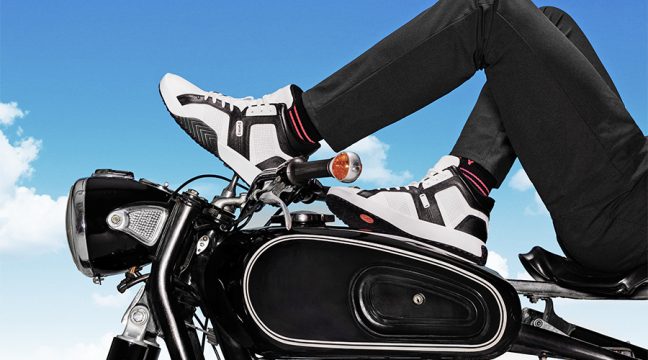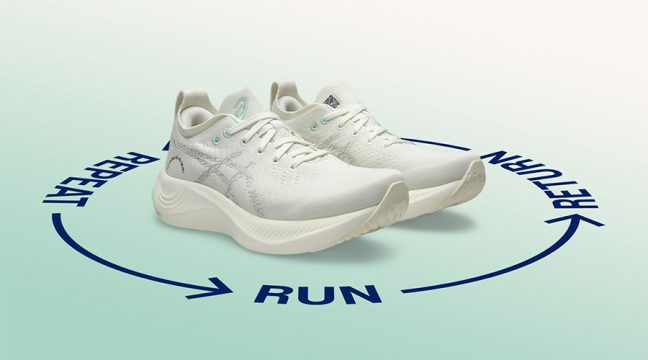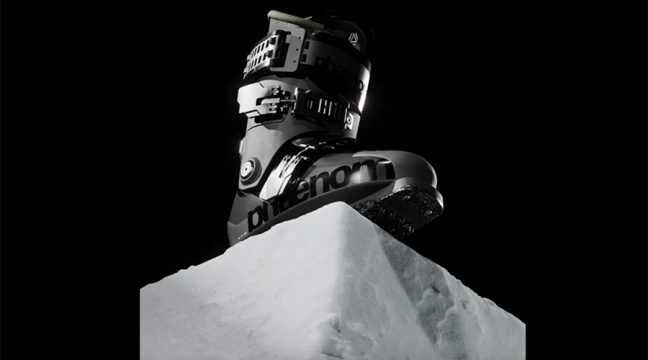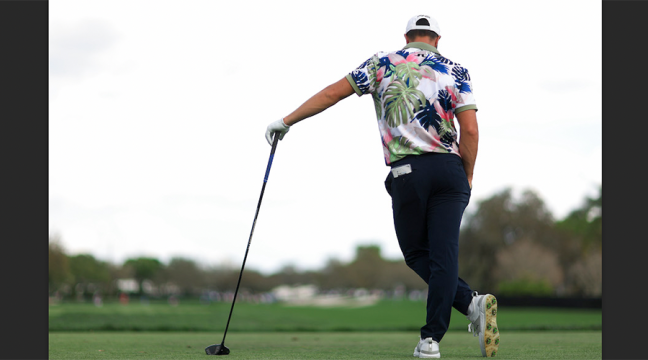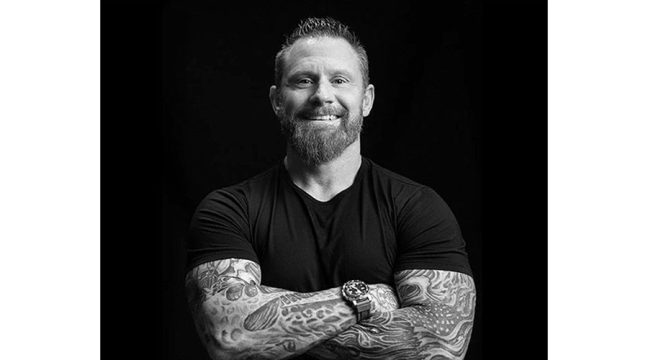Two-time Olympic Gold Medalist Ted Ligety – “Ted The Shred” – on how he approaches skiing and business.
By Nancy Bouchard, Ph. D.
Ted Ligety has what it takes. Whether it’s tearing down a slope at 70-plus miles per hour to win an Olympic Gold or running a successful company, Ligety brings talent, passion and the willingness to work harder than just about anyone at the table.
Ligety won his first Gold Medal at the age of 21 at the 2006 Turin Olympics. That same year he partnered with Carlo Salmini, a MIT grad and materials engineer, to launch the Shred (Ligety’s nickname) and Slytech brands, designed for the highly competitive eyewear and protective equipment fields. Now, a decade later, with another Olympic Gold Medal to his credit, five World Championships Gold Medals and and five World Cup overall giant slalom titles, both the partnership and Shred/Slytech are thriving. The brands have new offices in a new location as of this winter, in Ligety’s hometown of Park City, UT. His role is chairman, with Salmini as CEO, and the company is making waves with its new line of protective gear that aims to hit not only the ski slopes of the world but the mountain bike category, too.
Shred and Slytech are notable for performance (who understands the importance of gear better than an Olympic athlete?), sthhyle (Shred captured market share within helmets and goggles by reintroducing neon into the categories) and a keen sense of humor and irreverence. The first Shred logo was a sketch of Ligety’s that he had Salmini clean up while learning how to use graphic design software. According to Ligety, the company had no business plan but plenty of ambition, vision and desire to make the products they’d always craved.
Ligety is known as a person who is not afraid of putting himself ahead of the curve. When FIS, the international alpine ski race federation, was trying to limit logo size, he made a black goggle strap cover that covered most of the Shred logo. He added a window allowing a peek at the bright neon logo, with the word “Censored” in big white letters on top to comply with the rule while still voicing disappointment. He was vocal in his opposition to the same organization’s efforts to change the shape of GS skis, arguing that it was bad for developing racers. And he believed in the power of fun in the ski industry — something that has now paid off as a business venture as well.
It takes a lot to become an Olympic athlete. Malcolm Gladwell, in his best-selling book “Outliers,” says that in addition to talent, luck and a lot of other intangible ingredients, you need hard work — about 10,000 hours in fact. That’s a concept that is second nature to Ligety. He’s been skiing since he was two, and some would say he’s been trying to figure out ways to refine gear for nearly as long.
We caught up with Ted at the beginning of the 2016/17 World Cup Season and had a chance to talk with him about his career — both skiing and business.
SGB: When did you start skiing?
TL: I started at the age of two. My dad was from Connecticut and mom was from upstate New York and Indiana. They both skied, but didn’t do it regularly until they moved to Utah. They taught me on my own. I was in lessons after they got me up and running … they always joked that the mountain was my babysitter. But they were right. I started racing when I was 10. Until then, I was freeskiing with my buddies. I skied the whole mountain … we did jumps, straight lining mogul fields and generally terrorized the mountain all day.
SGB: Did you dream of becoming a ski racer as a child?
TL: I loved skiing from a young age and, like a 10-year- old basketball player wanting to join the NBA, I had dreams. Every little kid wants to be a professional athlete. I remembered watching Tommy Moe in the ’94 Olympics in Lillehammer when he won the Downhill and got Silver in the Super G. It was exciting. Skiing was my first love as a sport. I liked a lot of sports as a kid, but by high school, skiing was it. I was lucky to attend the Winter Sports School in Park City.
SGB: You stuck with ski racing after high school even when people said you should retire and go to college. Then you started a company when you were in the thick of training for World Cup events. Have you always been a maverick?
TL: In some ways I have been a bit of the rebel in both my ski career and in business. Shred was born out of the idea of rebelling against how the snowsports industry was segmented and how those segments were pitted against each other. And more specifically it was a major rebellion against how ski racing was marketed and perceived. The establishment in ski racing was and largely still is so entrenched in old traditions and afraid of fun. We wanted to be fun and wild, we wanted to be a company that embraced snowboarders, free skiers and racers that celebrated our shared similarities. At the time this was a bold idea.
SGB: Your path to the U.S. Ski Team was not quite traditional — how about your skiing technique?
TL: My skiing could be seen as breaking from traditional technique. I generally ski with far greater angles than other athletes, in that my hip is on or near the snow on almost every turn. Most racers try to trim distance to have a faster time, but to do this they would have to slide the top of the turn. I thought I could make up time by skiing a slightly wider/longer line but arc the whole turn, therefore carrying a higher speed and getting more acceleration out of the turns.
SGB: What tips do you have for the aspiring Olympic athlete?
TL: The most important thing for young kids is to have fun with it. And they need to work hard. But if you are having fun, then you will work hard. And if you work hard, it is fun.
SGB: What is your favorite ski event?
TL: Skiing-wise, giant slalom picked me. At first I was a slalom skier. GS is more similar to free skiing; it meshed well with my background of ripping around the whole mountain. I always had the ability to get big angles and lay it over hard. So it meshed with what I did well.
SGB: Do you have a pre-race routine?
TL: In the start gate, sometimes there is a place to get out of the snow and warm up, but not always. Generally, in the five to 10 minutes before I push out of the gate, I go through the course through my head, engrain it and then relax. When I’m on course I try to react instinctively as I’m going down the hill. I try to get my brain out of my body during the run.
SGB: Where is your favorite place to ski — anywhere in the world?
TL: I’m pretty biased for Park City. The skiing in Deer Valley is some of the best in the world, from groomers to ripping around in the powder. But a heli trip with a bunch of friends to Alaska or Canada is hard to beat.
SGB: What other sports are you involved with?
TL: I do a lot of mountain biking in the summer. Our ski team plays basketball and tennis. But I really love mountain biking, and it is a big part of the focus for Shred and Slytech. There’s really a natural correlation with ski, snowboarding and mountain biking.
SGB: Shred is celebrating its 10th anniversary. Take me back 10 years to when you founded the company. What was your thought process? Do you have a history in business?
TL: Carlo is a materials engineer. He was developing carbon fiber components and made carbon fiber shin guards in his garage. One of my teammates saw them and asked him about them. After I won the Gold Medal using them in the Olympics in 2006 in Torino, it was a big launch point for Slytech. Then we had an idea for Shred. When I started to ski, we weren’t just racers. We had twin tips and fat skis … but the brands were staunch and old school, and most picked their segments and alienated the other segments. I wanted to embrace ski, snowboard, freeride and anyone who loved getting out there with products that embraced all the facets of snowsports. We started July 2006 and by November had the first product. Carlo was taking a corner of his dad’s office in Italy and I used my garage in Park City. It was pretty cool and amazing … and neat to see where we are 10 years later compared to our competition.
SGB: How did you settle on neon for your flagship colors?
TL: It was neon from the get go. We wanted very loud, very bright goggles you could see across the valley. Neon colors are cool anyway, but they helped us stand out. And we were one of the first brands to really stand out from the crowd.
SGB: What skills did you bring to the table?
TL: I have always been a tinkerer with my equipment. I always liked to make things better — even with brand new gear. Carlo has an engineering background, and he is never satisfied and has an equal passion about always wanting to make things better. The combination of the two of us really worked. The blend of skill sets has helped us come up with the protective side and functional side of equipment. We have a big engineering team now, which really helps us to be as good and safe as possible.
SGB: What is your favorite new technology for Shred and Slytech?
TL: I think the ShredWide technology is pretty amazing with our field of view. It’s a much wider field of view than you get with regular goggles. If you are in a tuck skiing and you have to tilt your head up higher, it is a disadvantage … both for speed and performance. All of our goggles have been designed with that in mind. A lot of goggles out there look like they have big lenses, but they don’t have the field of view that ShredWide has. For Slytech, NoShock honeycomb technology is pretty amazing. We put it into our back protectors and knee and elbow pads. It spreads the energy out laterally — and evenly. Our helmet rotational energy management system takes rotational energy from a fall and can soften that blow. And we can put it into helmets without adding volume to them, which is also a technical advantage. It protects from a lateral impact, without sizing implications.
SGB: Where in Park City are the new headquarters?
TL: I still live in Park City, but we had an office in New Boston, NH and Huntington Beach, CA. We felt it was time to have everyone under one roof so we consolidated our offices. My hometown of Park City is where we originally started, and a hub for snowsports and the mountain bike world. It is a great community.
SGB: Do any skills from ski racing cross over to business?
TL: I think the foresight I’ve gotten over the years. In ski racing, once you are at the top level, you are always trying to trail blaze new ways to be faster, and new ways to problem solve. And ski racing is a very independent minded sport, you always need to be trying something new and coming up with new ideas. Sports in general are a helpful background in business, especially a sports-related business, but ski racing specifically is pretty good for getting used to working hard to get better.
SGB: What are your goals for 2017?
TL: My goals for Shred and Slytech are to continue to get the word out there, and continue to build products of our dreams. We are really proud of our products and we are a leader in innovation. We want to be a leader in the bike protection category as well. Skiing-wise, I’d like to win more World Cups and races. We have the World Championships this year, so defending my GS title is a big goal.
Footnote: Ted Ligety announced on January 16 that he will have back surgery keeping him off the slopes for the 2016/17 season. As a result, he is unable to defend his giant slalom title at the FIS Alpine World Ski Championships in St Moritz, Switzerland next month.
Photos courtesy Michel Cottin and Alexis Boichard

